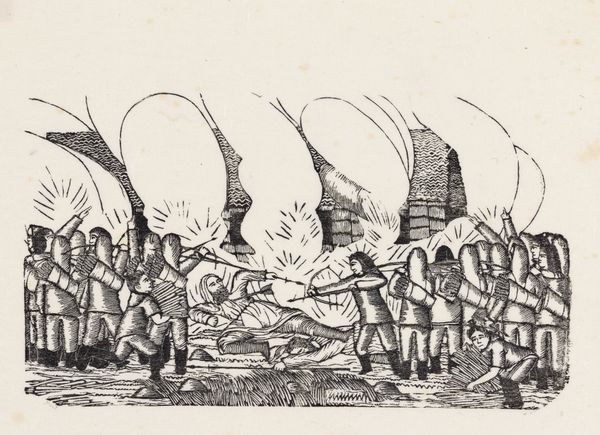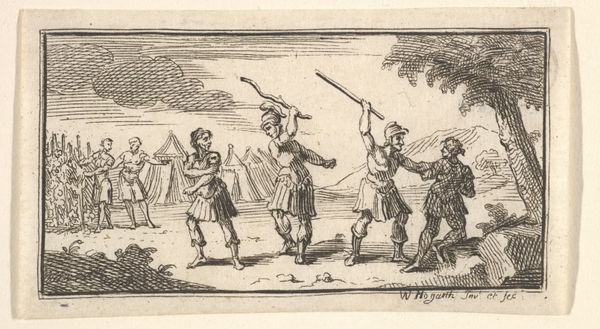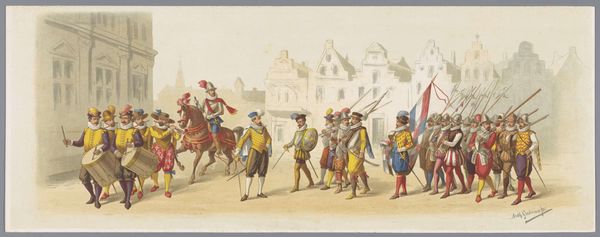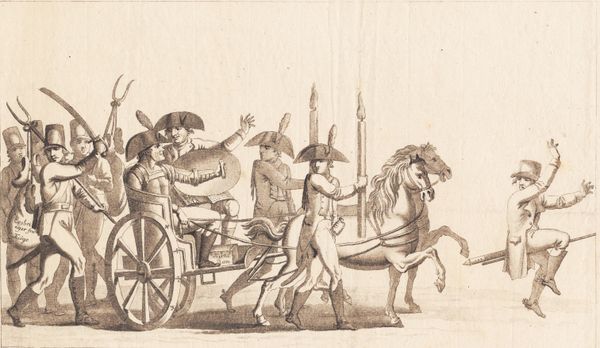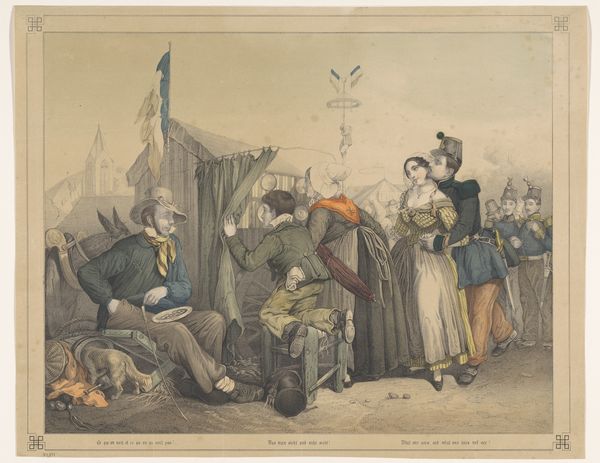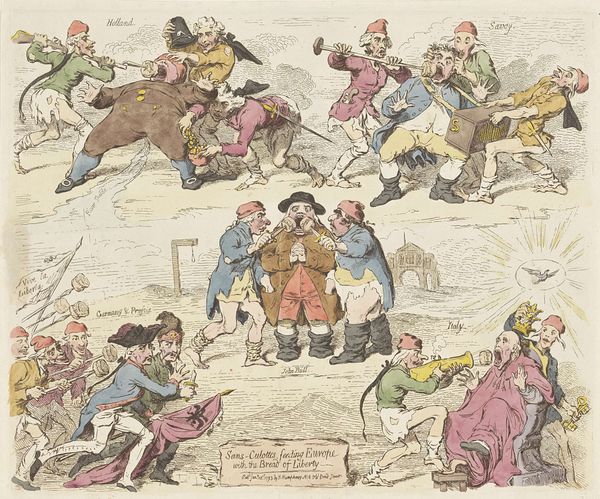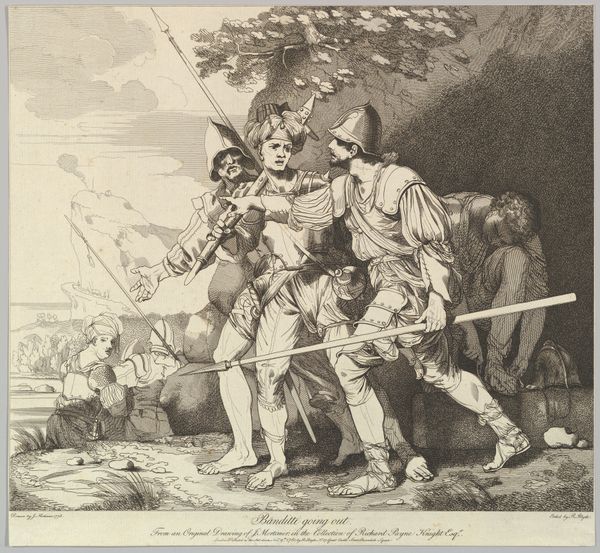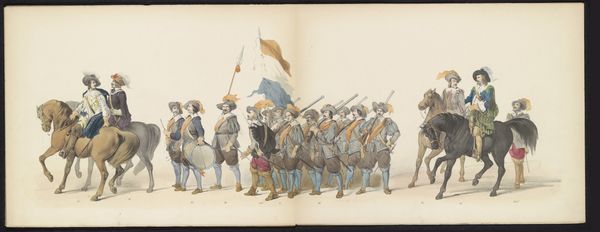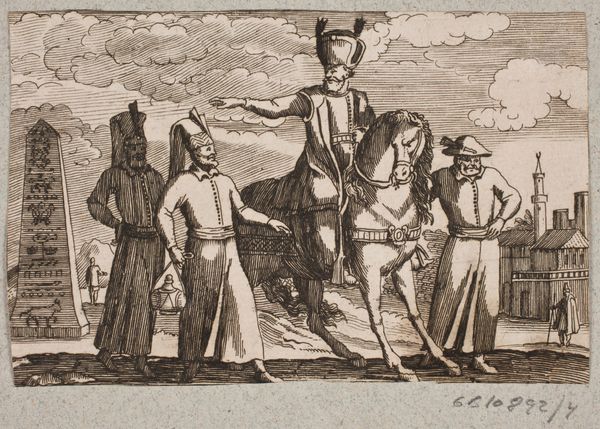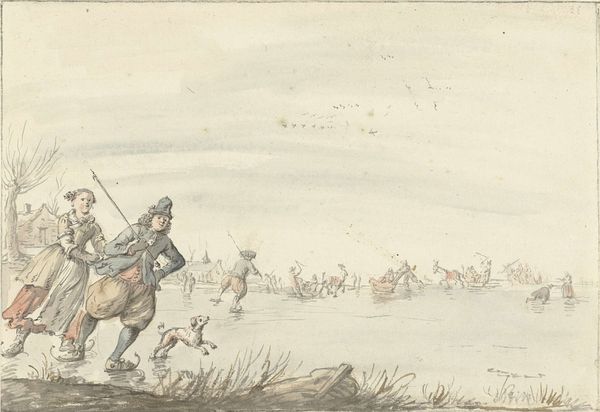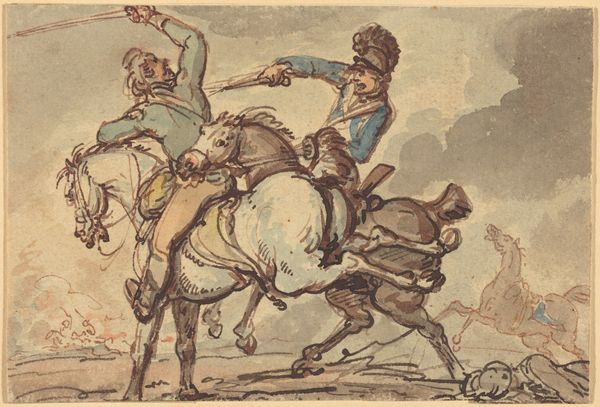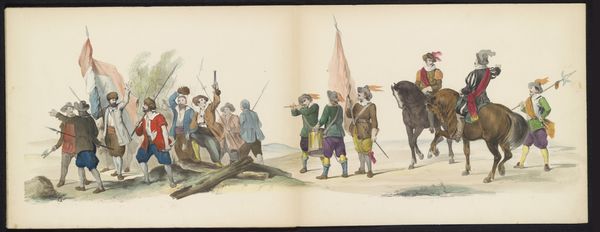
Lunch at the Fork (Le Dejeuner à la Fourchette) 1813
0:00
0:00
drawing, mixed-media, print, watercolor
#
drawing
#
mixed-media
#
water colours
# print
#
dog
#
watercolor
#
soldier
#
horse
#
men
#
watercolour illustration
#
genre-painting
#
history-painting
#
mixed media
Dimensions: Sheet: 6 1/16 × 15 9/16 in. (15.4 × 39.5 cm)
Copyright: Public Domain
Curator: Welcome to the Met. We are standing before Johann Gottfried Schadow’s “Lunch at the Fork (Le Dejeuner à la Fourchette)” created in 1813. This mixed-media drawing gives us a glimpse into the past. What is your first reaction to this genre scene? Editor: My initial impression is one of controlled chaos. It is a scene with a stark, almost bleak landscape providing the backdrop to the rather disturbing act of these soldiers seemingly roasting a horse on an open fire. Curator: Indeed. Schadow situates this artwork during the Napoleonic Wars, an era defined by conquest, societal upheaval and evolving political ideologies. These power dynamics profoundly influenced the daily lives and behaviours of soldiers on both sides of the conflict. The act itself is perhaps a demonstration of dominance over both animal and the local populations where resources may have been scarce or forcibly acquired. Editor: Let's not forget the very literal materiality of the scene itself. Schadow’s choice of watercolour and mixed media serves to emphasize the realities of war; it portrays an unflinching depiction of soldiers resorting to brutal measures. Considering how this artwork was rendered at a time of material shortages, we must remember how artists then actively transformed what was at hand, repurposing resources in direct response to constraints. The scarcity faced then may very well speak to a certain solidarity and resilience. Curator: The details within the image offer multiple viewpoints into gendered identities. Consider the fashionable woman positioned towards the painting’s center—is she an innocent bystander forced to witness the barbarity, or a co-conspirator complicit in the event? It is also worth pointing out the officer upon the horse, observing and potentially condoning actions from his advantageous vantage point, an idea about power perhaps? Editor: This depiction forces us to confront our conceptions of art's place in portraying history. This is very much tied to labour, and to me, invites introspection about art-making as another form of laborious craft—with the artist himself processing, representing, and ultimately mediating this specific material history through his representational acts. Curator: Understanding this work by Schadow requires that we recognize it as a multi-faceted representation of a troubled period. War creates visible trauma. We must explore its socio-historical narrative of trauma as a central issue, because who suffers and who inflicts it exposes crucial imbalances that determine experiences across political divides and individual suffering. Editor: Looking closer reveals it is possible to view the making of "Lunch at the Fork" as part of Schadow's response, a reaction deeply rooted in his context that asks us to think critically not only about its setting and means of its creation, but to look anew at consumption’s grim, unsettling mechanics during conflict. Curator: Well, let’s hope this conversation has stimulated some ideas about how social narratives meet materials. Thanks for joining me! Editor: Thank you.
Comments
No comments
Be the first to comment and join the conversation on the ultimate creative platform.
